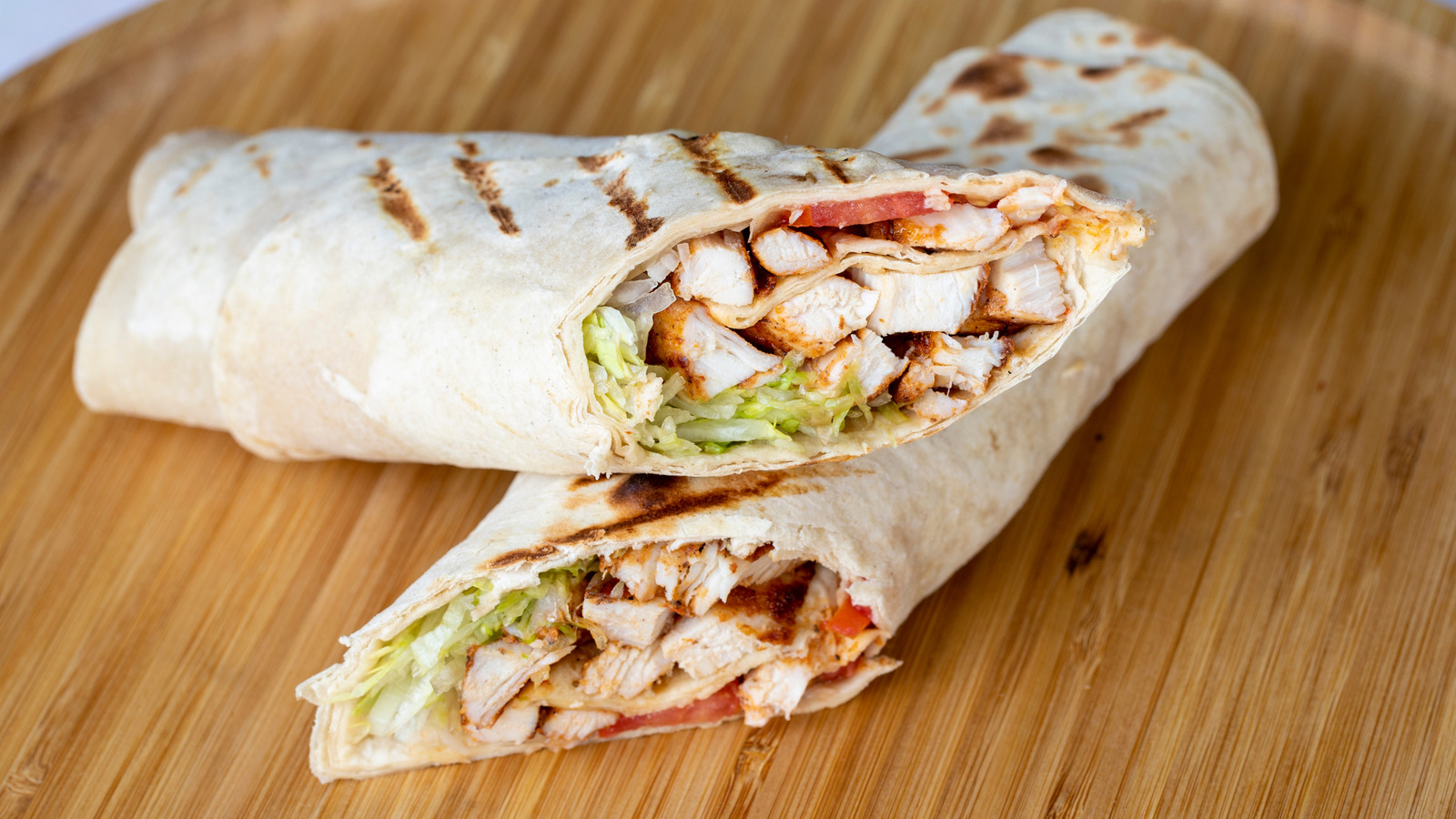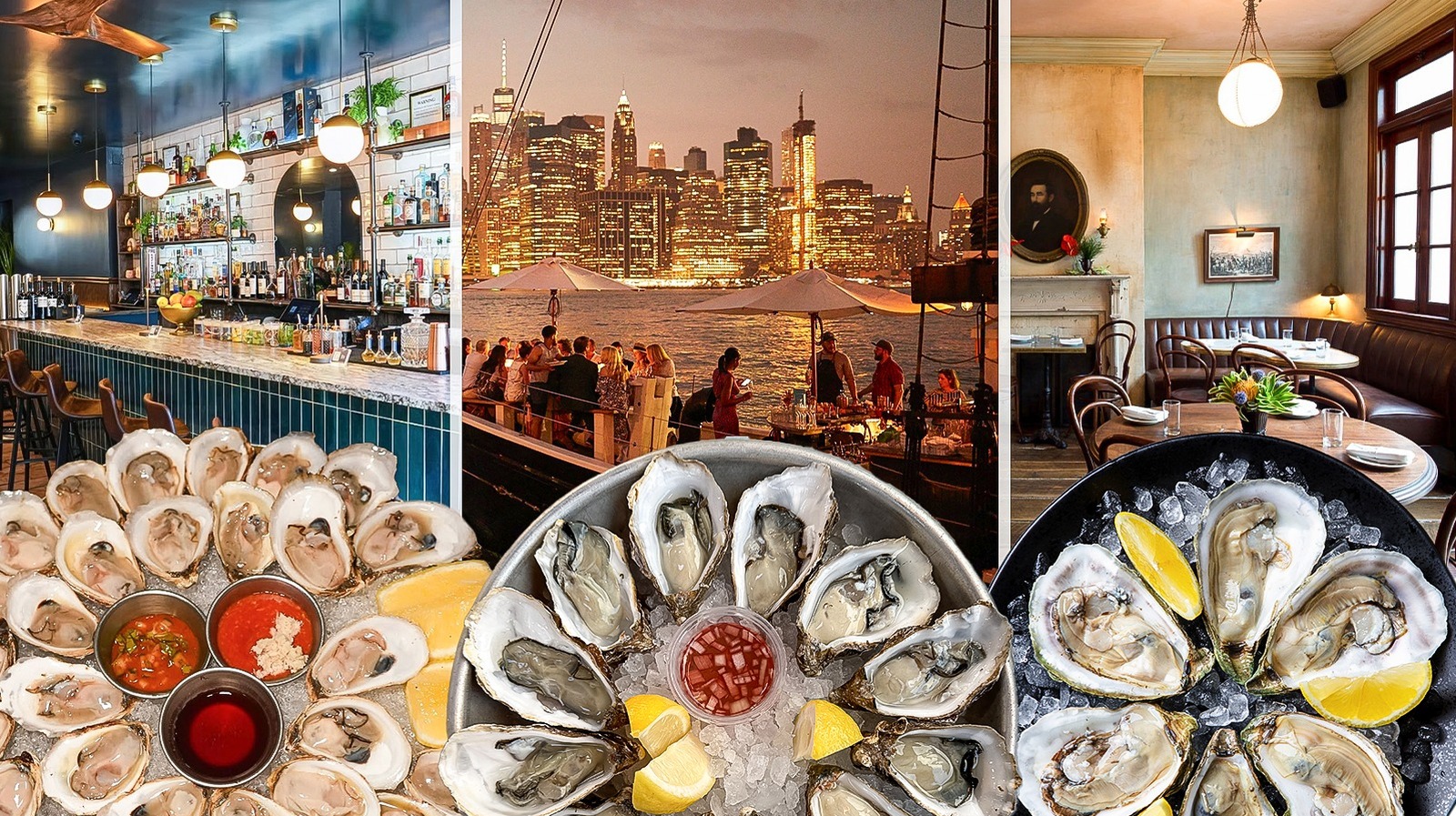#food-history
#food-history
[ follow ]
#american-cuisine #new-york-city #ice-cream #culinary-traditions #nostalgia #southern-cuisine #italian-cuisine
fromTasting Table
1 day agoThe Iconic Childhood Food That Didn't Exist Before 1963 - Tasting Table
A simple joy to make in your air fryer at home and a delight with all kinds of sauces from sweet and sour to barbecue to ketchup, if you're so inclined. Whether you like them with a potato chip crust, made from all breast meat, or shaped like dinosaurs, kids and adults have been addicted to these things for years.
Food & drink
fromTasting Table
1 week agoThe $99 Hot Dog Pack That Chicago Locals Still Swear By, Despite The Price - Tasting Table
As well-known as New York might be for its hot dogs, there is one other city in America that may rival it: Chicago. Chicago is famous for its hot dogs, and the people there take them extremely seriously. Don't ever let anyone in Chicago catch you putting ketchup on a hot dog. While there is surely some disagreement among locals about who makes the best dog,
Food & drink
Food & drink
fromTasting Table
1 week agoWhat The Discovery Of 4,000-Year-Old Noodles In China Taught Us About The World-Famous Food - Tasting Table
A 4,000-year-old bowl of millet noodles from Lajia, China shows hand-pulled technique and challenges assumptions about the geographic and grain origins of noodles.
fromMail Online
1 week agoRevealed: The 'correct' shade and consistency of GRAVY - do you agree?
Some Brits like theirs thick and meaty, using the Yorkshire Pudding as a vessel. But others are convinced that gravy should be thin and broth-like, poured all over the plate. To settle the debate once and for all, Asda surveyed 2,000 Brits about the 'correct' shade and consistency of gravy. Their results revealed that the ultimate gravy should be medium brown and just thick enough to coat a spoon.
Food & drink
fromTasting Table
3 weeks agoThe Old-Fashioned Popcorn Snack We Rarely See Anyone Eat These Days - Tasting Table
For folks in need of a memory jog, these treats comprised popcorn shaped into apple-sized balls and adhered together with molasses and butter. Other preparations replace the molasses with sweet, sticky elements like corn syrup or simple sugar syrup. Whatever the adhesive ingredient, it's all about the gooey balls of stuck-together popcorn and thick sugary syrup, creating a craveable, salty-sweet flavor profile.
Food & drink
fromwww.nytimes.com
3 weeks agoVideo: Duchess Potatoes
Prized for its presentation, this fancy French potato dish, Duchess potatoes, dates back to the 1700s, when it was created and given its aristocratic name to help elevate the reputation of the humble tuber in France, where it had yet to be widely embraced by home cooks. These are my squiggly duchess potatoes. For a new take on mashed potatoes, we're looking back on a classic French potato dish.
Food & drink
fromPortland Monthly
4 weeks agoHow Salona and Javelina Are Recreating Ancient Foods
If you tried to order a hamburger in ancient Rome, it wouldn't come with fries. No ketchup either: Tomatoes and potatoes wouldn't reach European shores until the sixteenth century. Five thousand miles away in what is now called the Pacific Northwest, there'd have been no lettuce, mustard, or sesame seeds for the bun. Cows and pigs aren't native to the Americas, so elk or bison would have to sup for an all-beef patty.
Food & drink
fromTasting Table
1 month ago10 Old-School Condiments You Don't See Much Anymore - Tasting Table
They can often be the backbone of food culture and cuisines, but as culture evolves, so too do our condiments. Some condiments are made with new techniques or recipes, or incorporate new ingredients, while others disappear completely. Either way, a look back at some of the condiments we don't see everywhere anymore, including the ones we grew up with or that our parents remember, can offer a fascinating glimpse into this evolution.
Food & drink
fromTasting Table
1 month agoThis Boomer Dinner Is Still Beloved Today And Simple Enough To Make At Home, So You Can Skip Olive Garden - Tasting Table
While both spaghetti and meatballs are quintessential Italian dishes, they aren't traditionally served together in Italy. The combination of meatballs, called polpette, with tomato sauce and spaghetti stems from an influx of Italians immigrating to the United States in the late 1800s and early 1900s, where they found meat to be much more affordable and began to use it more liberally in their cooking.
Cooking
Food & drink
fromTasting Table
1 month agoThe Philadelphia-Brand Cream Cheese We All Know And Love Was Never Actually Made In Philly - Tasting Table
Philadelphia cream cheese was invented in New York by William Lawrence and named 'Philadelphia' as a marketing tactic to evoke luxury associated with Philadelphia.
fromTasting Table
2 months ago7 Old-School Soups And Stews No One Seems To Eat Anymore - Tasting Table
On a cold fall or winter's day, nothing warms up your insides like a hot bowl of soup or stew, served with lots of crusty bread and plenty of butter. For some, only chicken noodle soup will do, while others prefer minestrone, Italian sausage, or French onion. But it would be very unlikely that today, anyone would reach for, say, a steaming-hot bowl of turtle soup or a dish of Hoover stew.
Food & drink
fromTasting Table
2 months ago6 Foods With More Vitamin C Than Oranges - Tasting Table
How vitamin C and oranges became synonymous is part biology, part history, and part marketing. Sailors in the age of exploration carried citrus to ward off scurvy, vitamin C deficiency often decimated crews on board. Centuries later, American orange growers in the early 20th century faced mountains of surplus fruit and turned to advertising, positioning orange juice as the modern breakfast drink. That campaign, paired with the discovery of vitamins, cemented oranges as the cultural symbol for staying well.
Food & drink
fromwww.ocregister.com
2 months agoRecipes: Maple syrup is much more than just a partner for pancakes
Maple syrup is a sweetener made from the sap of maple trees, primarily sugar maples, by boiling the sap to concentrate the sugar. According to the Encyclopedia of Food and Drink in America, Native Americans are generally thought to have been the first to tap maple trees and to turn the sap into syrup. The sap is less than 3% sugar; 32 to 40 gallons of sap boil down to just one gallon of syrup.
Food & drink
fromTasting Table
2 months ago18 Foods To Seek Out In The UK Beyond The Classics - Tasting Table
When Americans think of British food, they may think of fish and chips, shepherd's pie, or the full English breakfast. These are indeed classics, but the depth of British cuisine goes much further. As a Brit, I've grown up with these foods being a part of everyday life. It's easy to forget that dishes commonly known to you can be barely known anywhere else. This is why I wanted to create a list of U.K. dishes that fly under the radar.
Food & drink
Food & drink
fromTasting Table
3 months agoWhy This 140-Year-Old Condiment Has Yet To Make A Big Splash In America - Tasting Table
Maggi seasoning began in Switzerland in 1886, became globally ubiquitous, but remains less prevalent in the United States due to market timing and greater American meat consumption.
fromBoston Herald
3 months agoYou and your kids can make goldfish and animal crackers at home
My 18-month-old grandson doesn't have the biggest vocabulary, but like most toddlers, he makes what he wants known pretty clearly. That's especially true when it comes to his favorite foods, which these days is pretty much anything he can stuff into his mouth unassisted. His most practiced phrase is "Eat, eat!" followed by a gesture he learned at daycare - tapping his thumbs and fingers together in a flat "O" to make the American Sign Language sign for "more."
Food & drink
fromTasting Table
3 months agoThis Mochi Treat Was Invented In The United States, Not Japan - Tasting Table
When you think of treats from Japan, you may think of a few different snacks, such as matcha, dango, and mochi ice cream. Surprisingly, however, the latter does not trace its roots back to Japan. While mochi is from Japan and can be traced back to ancient times, mochi ice cream is a different treat with a much more recent date of origin, only being introduced to the American public in the 1990s.
Food & drink
Food & drink
fromwww.tastingtable.com
3 months agoThe Fruity, Old-School Ice Cream Flavor We Don't See People Eat Anymore
Tutti frutti ice cream—a vanilla base with candied or dried fruits (commonly cherries, pineapple, raisins) and sometimes nuts—has declined in popularity but remains available regionally.
Food & drink
fromTasting Table
3 months agoNo Banana? Why Today's Twinkies Taste Completely Different From The Original Version - Tasting Table
Twinkies began with banana creme in 1930, switched to vanilla during World War II banana shortages, and banana flavor later returned only in limited promotions.
fromTasting Table
4 months agoThis Cheesy, Classic Comfort Food Was Created During The Great Depression - And We Still Eat It Today - Tasting Table
In 1937, Kraft boxed macaroni and cheese was born, marketed as an affordable meal option during the Great Depression. Each box cost nineteen cents.
Food & drink
fromTasting Table
4 months ago10 Underrated Vintage Snack Brands You'll Still Find On Store Shelves Today - Tasting Table
Fig Newtons are soft-baked cookies with a filling of fig jam, providing a less sweet but satisfying snack. While divisive in opinion, they have been enjoyed for over a century.
Food & drink
fromBoston Magazine
4 months agoThe Top 5 Cod Dishes in Greater Boston
Order a cod double-header at this date-night Portuguese spot, dunking the former (fritters) into saffron mayonnaise before diving into the main course, plated with a crispy potato cake in a flavorful chouriço-studded caldo verde.
Food & drink
fromTasting Table
5 months agoThis Old-School Chicken Dish Has Been Around Longer Than You'd Think, And Has A Murky Origin Story - Tasting Table
The middle of the century was not kind to American cooking, or at least, we haven't been kind looking back on these old-school dishes. The popular dishes of the '50s and '60s now mostly have a bad reputation, usually for embracing modern canned, powdered, and frozen ingredients that forewent freshness and flavor for affordability and convenience.
Cooking
fromTasting Table
6 months agoElvis Presley's Favorite Fast Food Burger Is Still Available Today - Tasting Table
Elvis Presley's affinity for comfort food, particularly his favorite sandwiches, revealed his deep connection to home and indulgence, highlighting his love for hearty, flavorful dishes.
Silicon Valley food
[ Load more ]






